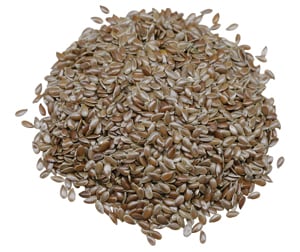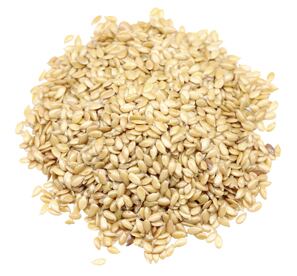Part of the strong outlook for the ingredient is the fact that it is showing up in more new applications, said Mary Ekman, head of market development and sales for the company.
“Flax has always had a health halo and it is getting good traction in bakery and a lot of different food segments. But now we are getting significant interest in the area of sports nutrition and interest for its use in ready to drink beverages,” she said.
Ekman said these new applications are using forms of flax that go beyond the ingredients’s historical comfort zone. Pizzey’s line of PurFlax ingredients includes a number of different offerings pertaining to specific applications.
“These new product categories are not just looking for your run-of-the-mill whole and cracked flax seed,” Ekman said.
Omega-3 as a selling point

One of flax’s selling points is its omega-3 content. A curiosity in label regulations in the US allows manufacturers to list overall omega-3 content but does not require them to delineate the specific fatty acids. Thus it is that plant sources such as flax, which contribute alpha-linolenic acid, or ALA, compete along side marine and algal sources, which contain varying amounts of EPA (eicosapentaenoic acid) and/or DHA (docosahexaenoic acid), the long-chain fatty acids which boast the most powerful health benefits and on which most of the research has been conducted. ALA is converted to EPA and DHA in the body, but at a very low rate.
On the plant side there is competition for flax from chia, which also boasts and omega-3 content claim. Other potential competitors include DuPont/Monsanto’s GMO soybean and Ahiflower, a new oil seed crop that is just coming to market. Both of those hinge on their SDA content. SDA, or steriodonic acid, is an intermediate step in the ALA to EPA and DHA conversion pathway offering a significantly higher conversion ratio. Ahiflower is still too new to the market to assess the competitive threat it might pose, Ekman said, and the soybean, suffering perhaps from the cloud hanging over all GMO ingredients, has yet to make its market debut.

“There is always competition from the marine sources,” Ekman said. “And we do get competition from chia. But the advantage of flax is that it has been around for a long time and formulators are familiar with it. And it is a domestic source; chia is imported from South America.”
Ekman said that the demand for flax appears to be durable, and the spark of popularity flax enjoyed starting a few years ago has lit a flame that does not appear to be burning out. Ekman said part of that earlier popularity came from reports that actress Hilary Swank had used flax seed oil supplements as part of her training regimen to prepare for her role as a professional boxer in the 2004 film Million Dollar Baby.
“It has been a little slower in growth, but we still think the future remains very bright. A lot of people weren’t sure if that was a trend that would ebb and flow. There seem to be more and more categories popping up where people are looking for flax,” she said.
Facility upgrade
Pizzey is in the process of expanding and upgrading its manufacturing facility in Russell, Manitoba to support the expected market growth, Ekman said. The expansion will include an extension of the company’s heat treatment capability. Currently, the PurFlax branded products undergo targeted heat treatment to provide a consistent microbial reduction while protecting flaxseed’s natural stability, nutrition and function. Once the expansion is commissioned in Q2 2016, the company said all flaxseed produced at the facility for both human and animal consumption will undergo a heat treatment step.
“There were a few cases in late 2015 of recalls for microbial contamination concerns and at least one of them called out flax,” Ekman said. “Flax has never been a risky product but it continues to be used more and more in ready to mix, ready to eat products, so we thought it was time to take this step.”
